|
Arriving as spores carried on the wind, ferns were among the first vascular plants to colonize the young Hawaiian Islands when they were newly formed. About 200 species of ferns can now be found across the entire island chain. Sixty-five percent of these species are considered endemic, found nowhere else in the world. Below are a select few of these amazing plants that you are likely to see in Hawaiʻi Volcanoes National Park.
ʻAeʻAe is a tough, pioneer species. This plant is among the first to colonize recent lava flows and can often be found sprouting from cracks and cavities in the lava. The fronds are typically narrow, less than two feet tall, and divide once. 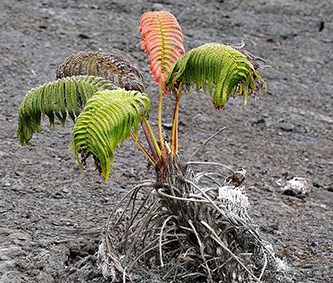
ʻAmaʻuThe fronds of young ʻamaʻu ferns are a distinctive red color, eventually turning a glossy green as they mature. In addition to the unique red fronds, ʻamaʻu can also be distinguished from the similar-looking hāpuʻu tree ferns in that they are not as finely divided. The fern has a large role in Hawaiian folklore. The pig deity Kamapuaʻa occasionally took the form of ʻamaʻu, and one translation of Halemaʻumaʻu, the crater in the heart of Kīlauea caldera, is "house of the ʻamaʻu fern." 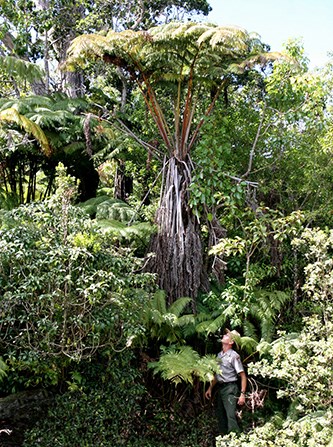
HāpuʻuHāpuʻu are the largest tree ferns in Hawaiʻi, capable of reaching an astounding 35 feet (10.7 m) in height. Look for these giants near the summit of Kīlauea. There are two varieties commonly seen in the park, hāpuʻu ʻiʻi and hāpuʻu pulu. The latter is notable for the soft golden fibers found on stalks, which was used to stuff pillows and mattresses. See the short video, Preserving the Ruins of the Hawaiian Tree Fern Industry, for more information. 
PalapalaiThis ornate indigenous fern is important in hula, often used in adornments for the head (lei poʻo) and wrists (kūpeʻe) of dancers. The plant is highly associated with Laka, the deity of hula. 
UluheA ubiquitous sight in the Hawaiian rainforest, this common fern also known as false staghorn grows in dense mats that can reach over 20 feet (6.1 m) high. Its thick mats can make travel through the forest cumbersome and potentially dangerous as they can obscure hiking hazards such as rocks and lava tubes. However, because of these dense thickets, the plant is a major builder of soil in native rainforest and other plants rely of the foundation it creates. Uluhe fronds repeatedly divide into distinctive pairs. 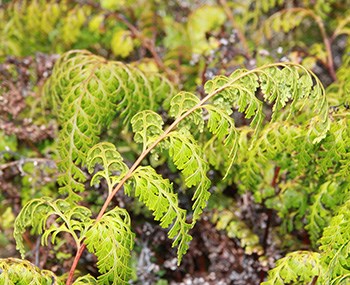
PalaʻāPalaʻā, also known as lace fern, is important in hula and often used in lei. The word palaʻā in Hawaiian means brownish-red, referring to the dye color extracted from older fronds. In Native Hawaiian tradition, Hiʻiaka, the favorite sister of the volcanic deity Pele, battled a a moʻo (lizard) wearing a skirt of palaʻā.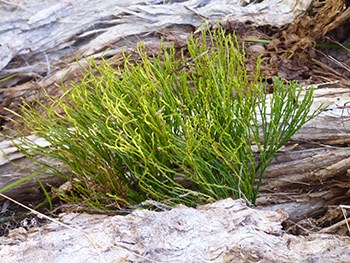
Moa (Whisk Fern)The sparse branches of this primitive plant reminded Hawaiians of birds’ feet and inspired its name, moa (chicken). Adaptable moa grows either on the forest floor or in the trees. 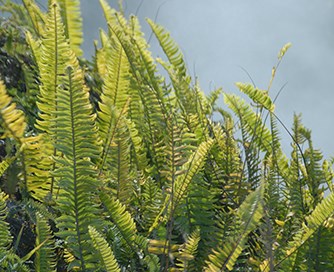
Asian Sword FernThis highly invasive plant native to southeast Asia is very visible in the summit area of Kīlauea, appearing to dominate certain areas of forest. Its leathery fronds look very similar to native species of sword fern, known as kupukupu. |
Last updated: February 18, 2021
